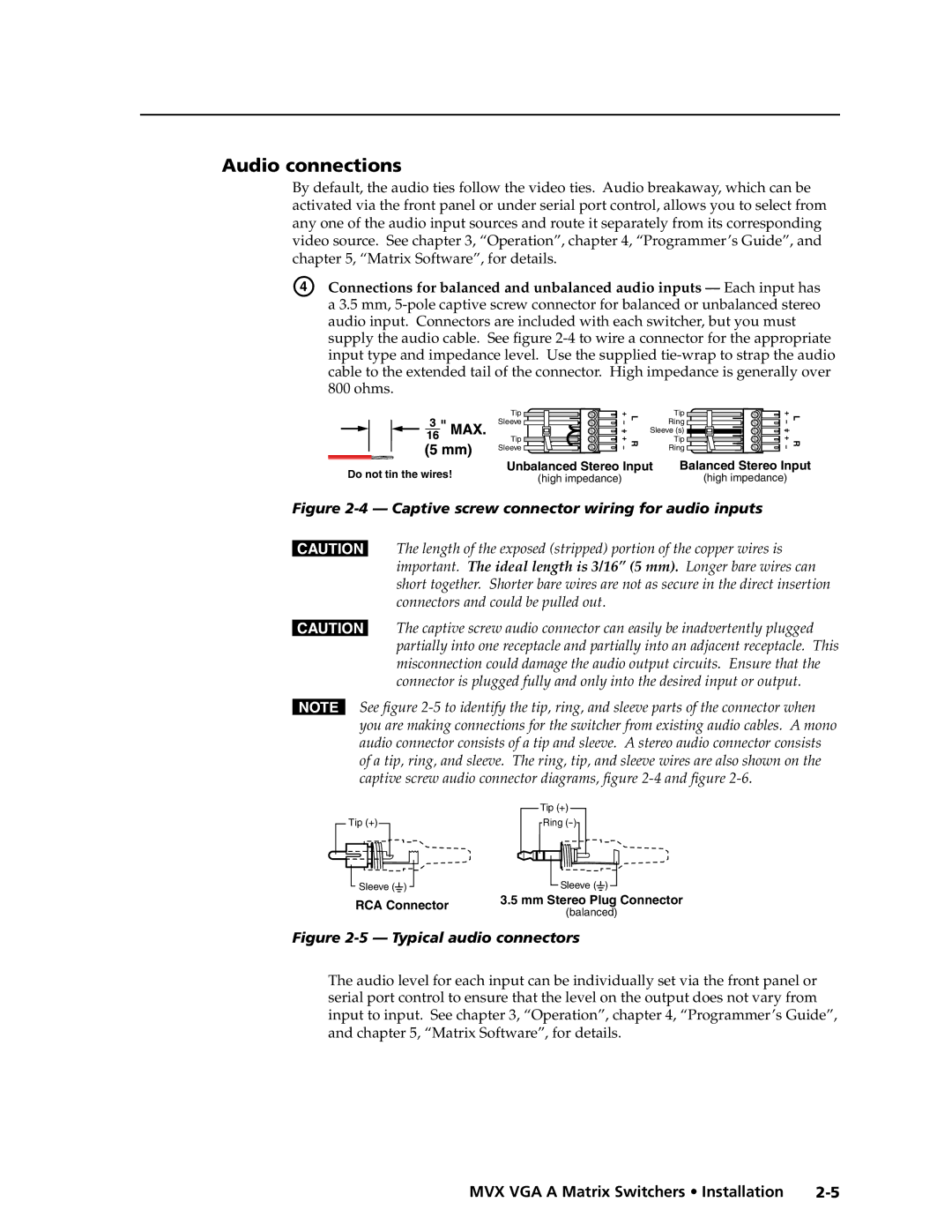
Audio connections
By default, the audio ties follow the video ties. Audio breakaway, which can be activated via the front panel or under serial port control, allows you to select from any one of the audio input sources and route it separately from its corresponding video source. See chapter 3, “Operation”, chapter 4, “Programmer’s Guide”, and chapter 5, “Matrix Software”, for details.
D | Connections for balanced and unbalanced audio inputs — Each input has | |||
| a 3.5 mm, | |||
| audio input. Connectors are included with each switcher, but you must | |||
| supply the audio cable. See figure | |||
| input type and impedance level. Use the supplied | |||
| cable to the extended tail of the connector. High impedance is generally over | |||
| 800 ohms. |
|
|
|
| Tip | L | Tip | L |
| Sleeve | Ring | ||
|
|
| ||
|
|
| Sleeve (s) |
|
| Tip | R | Tip | R |
| Sleeve | Ring | ||
|
|
| ||
Do not tin the wires! | Unbalanced Stereo Input | Balanced Stereo Input | |
(high impedance) | (high impedance) | ||
|
Figure 2-4 — Captive screw connector wiring for audio inputs
CThe length of the exposed (stripped) portion of the copper wires is important. The ideal length is 3/16” (5 mm). Longer bare wires can short together. Shorter bare wires are not as secure in the direct insertion connectors and could be pulled out.
CThe captive screw audio connector can easily be inadvertently plugged partially into one receptacle and partially into an adjacent receptacle. This misconnection could damage the audio output circuits. Ensure that the connector is plugged fully and only into the desired input or output.
NSee figure
| Tip (+) | |
Tip (+) | Ring | |
Sleeve ( ) | Sleeve ( ) | |
RCA Connector | 3.5 mm Stereo Plug Connector | |
(balanced) | ||
|
Figure 2-5 — Typical audio connectors
The audio level for each input can be individually set via the front panel or serial port control to ensure that the level on the output does not vary from input to input. See chapter 3, “Operation”, chapter 4, “Programmer’s Guide”, and chapter 5, “Matrix Software”, for details.
